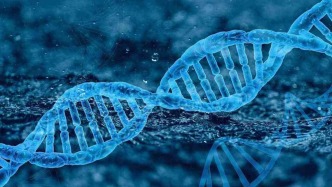
Scientists at the Icelandic company GeneDecode have completed an important study. They created a complete reorganization map of the human genome, a detailed map of how human DNA is mixed during reproduction. This research deepens people's understanding of genetic diversity and is a continuation of 25 years of research by scientists to explore the mechanisms of new diversity in the human genome and its association with health and disease. The relevant results were published in the journal Nature on the 22nd.
For the first time, this map takes into account short-distance, non-crossing reshuffling of grandparental generations. Such shuffling has been difficult to detect due to the high similarity of DNA sequences. In addition, the map identified some regions of DNA that had not undergone significant shuffling. These regions may serve a protective role in maintaining critical genetic functions or avoiding chromosomal abnormalities. The discovery helps provide a deeper understanding of why some pregnancies fail and sheds light on how the genome balances diversity and stability.
The shuffling process is critical for maintaining genetic diversity, but mistakes in it can also cause serious reproductive problems. For example, it can cause genetic defects that prevent pregnancy from progressing properly, and is a factor in around 10% of couples worldwide who face infertility problems. This research offers new possibilities for improving fertility treatments and diagnosing pregnancy complications.
The study also pointed out the differences in genome shuffling patterns between men and women: women have fewer non-crossover shuffling events, but their incidence increases with age. This may be because older pregnant women are more susceptible to pregnancy complications and the risk of chromosomal abnormalities in their children. The reason for the increase. Although both males and females pass mutations to the next generation as a result of the shuffling, males do not show similar age-related changes.
From an evolutionary perspective, understanding the reorganization process is important for understanding the development of humans as a species and how individuals differ from each other. All human genetic diversity results from two phenomena: shuffling and de novo mutation, in which offspring carry DNA sequences that are not exactly present in their parents. The map shows that mutations tend to cluster near regions where DNA mixing is active, suggesting that the two processes are closely linked. Through this map, people can more clearly understand the nature of genetic variation and its profound impact on human health.
This map provides the medical community with a powerful tool to analyze complex genetic phenomena and paves the way for personalized medicine in the future. It tells us how the genome plays a key role in maintaining individual health and fertility, while also emphasizing the profound significance of the genome to the study of human evolution and individual differences. The map also reminds us that all genetic diversity can be traced to shuffling and de novo mutations, two closely linked processes that shape the identity of our species. And we are gradually uncovering the secrets hidden behind the genetic code, so that we can better predict, prevent and treat diseases caused by genes.